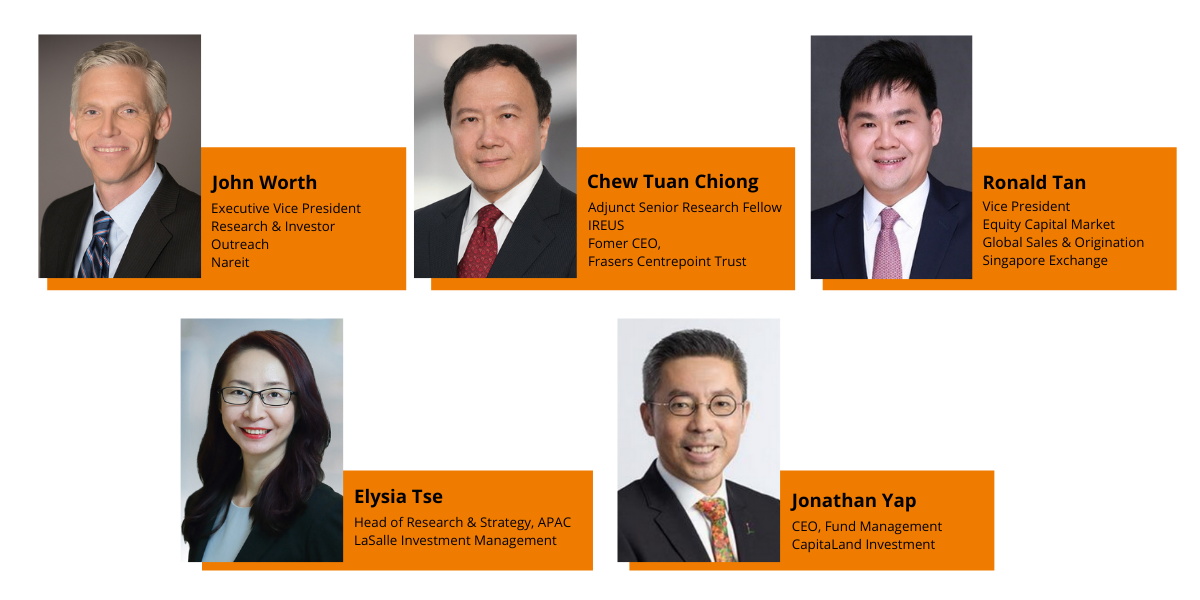REIT management – internal or external?
In a lively debate, industry experts invited by IREUS exchange opinions, experience and insights on how best to run a REIT.
26 October 2021
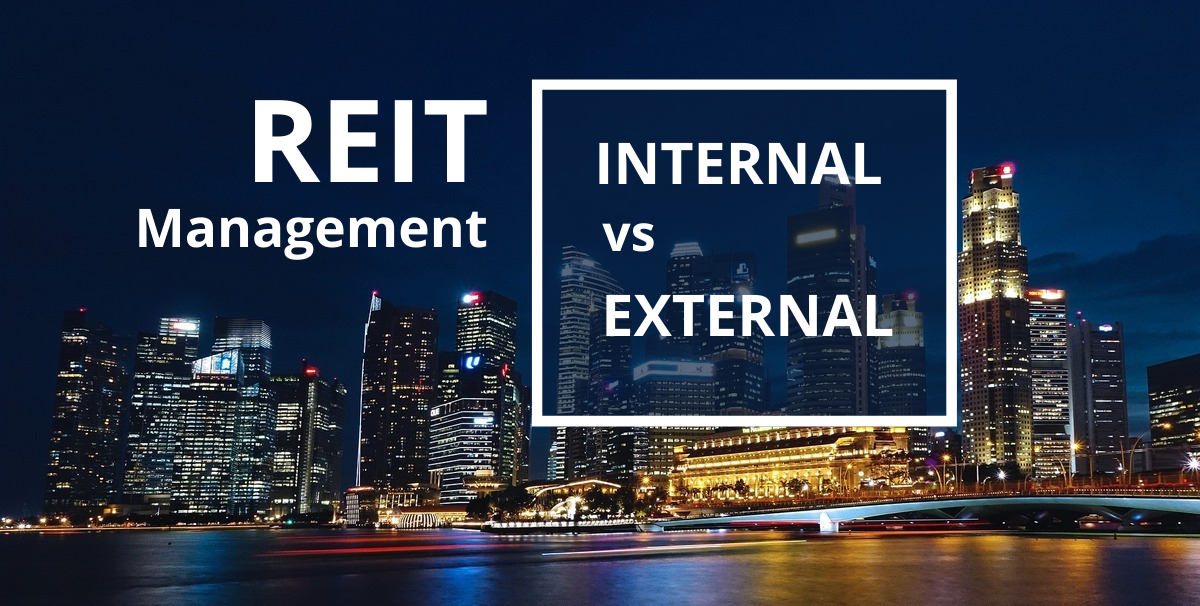
With 42 real estate investment trusts (REITS) collectively accounting for a market capitalisation of around S$100bn, Singapore has the largest REIT market in Asia (ex-Japan). REITS listed on the Singapore Exchange (SGX) – popularly referenced as “SREITs” – make up some 12% of the entire Exchange’s market capitalisation of nearly S$1trn in 2019.
On grander scale which reflects the immensity of the American economy, US REITS account for 70% of the global REIT market, with some US$1.5trn (or over S$2trn) in market capitalisation.
Over in the US, the majority of REITS are internally managed, but SREITs here adopt an external management model. While the Singapore REIT market has certainly punched well above its weight and churned out impressive numbers over the years, why has it not adopted the global leader’s model and what are the reasons for doing so?
The NUS Institute of Real Estate and Urban Studies (IREUS) assembled a panel of industry experts to deep dive into this topic “Asset Management Model for SREIT – internal vs external” for its online session on 24 September 2021.
Internal or external management – a question of investor preference
The “fire starter” speaker Dr John Worth kickstarted the session with an overview of the history and development of American REITS.
While noting that 97% of US REITS are internally managed for better alignment of interests between REIT managers and shareholders, Dr Worth nonetheless highlighted that this arrangement was very much an outcome of investor preference.
“The US, especially dedicated REIT manager teams as well as the sell-side community have a strong preference for internal management,” said Dr Worth, who is the executive vice president of research and investor outreach at the Washington, D.C.-based National Association of Real Estate Investment Trusts (Nareit).
He added that the minority US REITS that were externally managed were penalised by investors and traded at a discount. Investor preference and behaviours had therefore been instrumental in pushing the American REITS towards an internal management model.
The other panellists echoed similar sentiments. Ms Elysia Tse, who is the APAC head of research and strategy at LaSalle Investment Management, highlighted that a similar debate is on-going in private equity, but in the final analysis, the outcome is investor-driven.
“A lot of small pension funds would start with an externally managed model,” she said. “Once they get to know a market better they might then develop an in-house team.”
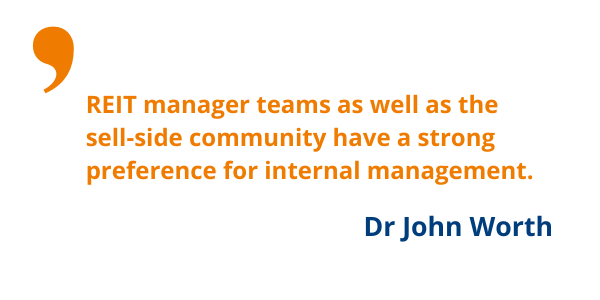
Systemic differences
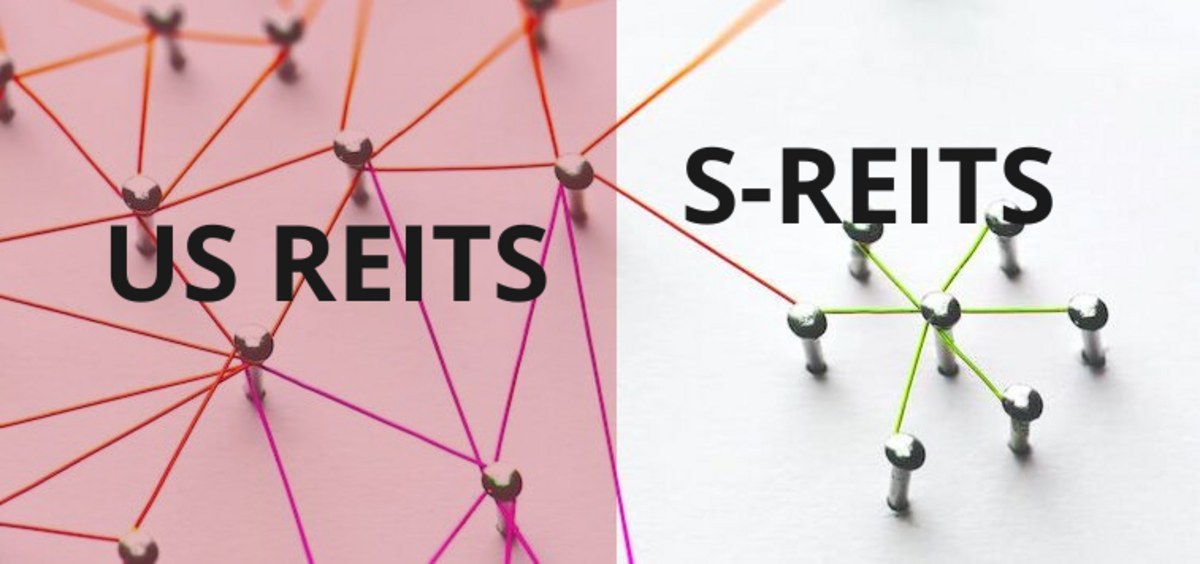
Mr Ronald Tan called attention to the different contexts within which SREITs and the American REITS developed, highlighting that the intent and logic behind policy decisions and regulations needed to be taken into account before any meaningful analysis and comparison of REIT management styles could proceed.
“When REITS were first instituted here in 2001, the intention was to create an alternative product which provide stable and reliable dividend yields as part of the investor’s retirement plan,” he said. Mr Tan is the vice president of equity capital markets, global sales and origination at SGX.
Such a policy stance, which led to SREITs being launched under a Collective Investment Scheme, entailed that the external management model would become a natural fit. A REIT here is marketed as it were a unit trust product or fund management product, whose success would critically depend on the expertise and experience of the asset managing team.
“Most REITs in Singapore are sponsored by property companies,” said Mr Jonathan Yap, CEO of fund management at CapitaLand Investment. “And as a result, they subscribe REITs as part of their overall business model.”
“What is unique in Singapore’s case is that most sponsors also have a stake in the REITS, so as a result interests between sponsors and unitholders are extremely aligned,” he continued.
IREUS adjunct senior research fellow, Dr Chew Tuan Chiong added that REITs on the SGX would not have progressed so much without sponsors, which play a key role in providing a steady pipeline of real estate assets and other capital.
“The stronger the sponsor, the more likely the REIT is going to progress faster,” said Dr Chew, who is also the former CEO of Frasers Centrepoint Trust. “When REITs are small, they do not yet have economies of scale, and need support from the sponsor in terms of pipeline, management, talent pool and sufficient presence to exert a level of gravitas in the market.”
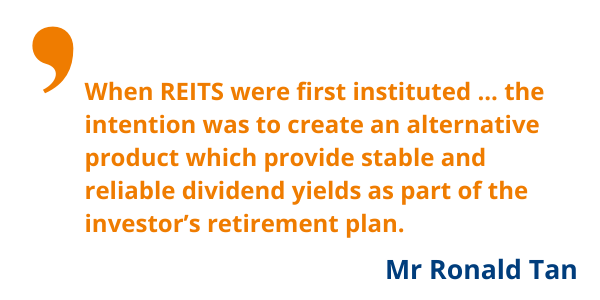
Safeguarding unitholders’ interests
Noting that REIT sponsors in Singapore also own the external managers, session moderator and adjunct senior research fellow at IREUS, Mr Leslie Yee raised the issue of independence of the manager from the sponsor. He highlighted the possibility of entrenchment of the manager in tandem with the erosion of the power of shareholders to remove incompetent managers.
In response, CapitaLand’s Mr Yap opined that the onus on sponsors and their managers to run a REIT responsibly and maintain a certain level of performance is in fact heavier. Given that a REIT forms part of the sponsor’s broader portfolio, the fallout arising from poor performance or bad management would percolate to other parts of the business and adversely affect the goodwill of the company as a whole.
Dr Chew concurred and added: “Any self-respecting sponsor would not want to taint their reputation for want of a small gain in the short term. By and large, REIT sponsors in Singapore have remained at arm’s length, and have been transparent and fair.”
“Ultimately, investors can vote with their feet,” Mr Yap remarked. “They should invest in vehicles that are good performers, not so much because they are internally or externally managed. That, to me, is secondary.”

Performance as the primary metric
So is the internal versus external management dichotomy a tangential issue, as Mr Yap aptly conveyed?
Sharing his experience on interacting with investors, SGX’s Mr Tan said: “In almost all IPOs that we run today for REITs, the top questions that investors ask are – what is your growth pipeline? What is the quality of the sponsor that is backing the vehicle? Where investors are very focused is about the growth, the credibility and the support that the sponsor is providing to the listed vehicle.”
He added that while it might be difficult to hit the sweet spot between REIT sponsorship and management independence, there are sufficient regulations and safeguards in place to mitigate potential risk points, including very rigorous rules governing related-party transactions.
Economies of scale and the issue of cost
Being part of a sponsor’s broader business portfolio also brings a slew of benefits to the REIT.
For example, with environment, social and governance (ESG) considerations ranking high on the agendas of governments and policymakers worldwide, REIT sponsors are uniquely positioned to offer group-level research and implementation programmes, which an individual REIT would have to undertake on its own otherwise.
Mr Yap thus suggested that the economies of scale and the cost savings arising from such synergies should be considered while assessing and comparing the cost of an external manager against that of an internal manager.
Dr Worth highlighted that the cost of running a portfolio of properties is not “dramatically different between an internally managed REIT in the US and an externally managed fund of the same size.”
Yet REITs in the US have tended to outperform private funds there, thus suggesting that management costs are not key drivers in the performance of investment vehicles.
Flexibility as the bridge
While both the internal and external management models come with their own strengths and constraints, flexibility – as it turns out – is the common theme that bridges both sides, and is often the key ingredient for the success of REITs.
“REIT regimes need to be appropriate for the economy in which they are operating,” said Dr Worth. “And one key to a successful REIT regime is flexibility.”
“The US model has not set strict restrictions on what constitutes real estate, and arising from this flexibility, one of great successes of [US] REITs right now is really being on the front foot and leaders in innovative property sectors such as data centres and cell phone towers,” he added.
Dr Worth also cited flexibility in terms of structure and property transfers as other factors that had been instrumental in fostering a vibrant REIT market in America.
